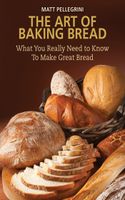Advertisement
Sourdough
Appears in
Published 2011

Sourdough is a naturally leavened bread, which means that yeast is not added to the dough. Rather, a mixture of flour-and-water are allowed to ferment (with some manipulation) over the course of four to five days. During that time, yeasts that exist in the air infiltrate the flour and water mixture to produce what’s called a sourdough starter. That starter is then developed further to produce what baker’s call a “leaven.” The leaven is then incorporated into the final dough.
Now, it doesn’t take too much poking around to realize that there are almost as many sourdough recipes in existence as there are bakers. But after an examination of many of the experts’ recipes, along with more than enough trial and error, I’ve settled on the recipes below—one for white wheat and one for whole wheat sourdough. Not only will these produce wonderful results as is, they allow for room to tweak the whole wheat flour and water contents to create a perfect loaf for your taste. But, as always, start with these recipes and then slowly implement changes. This way you won’t have to commit the unforgivable sin in the baker’s world—throwing out bread because you were overzealous in attempting to change it.

